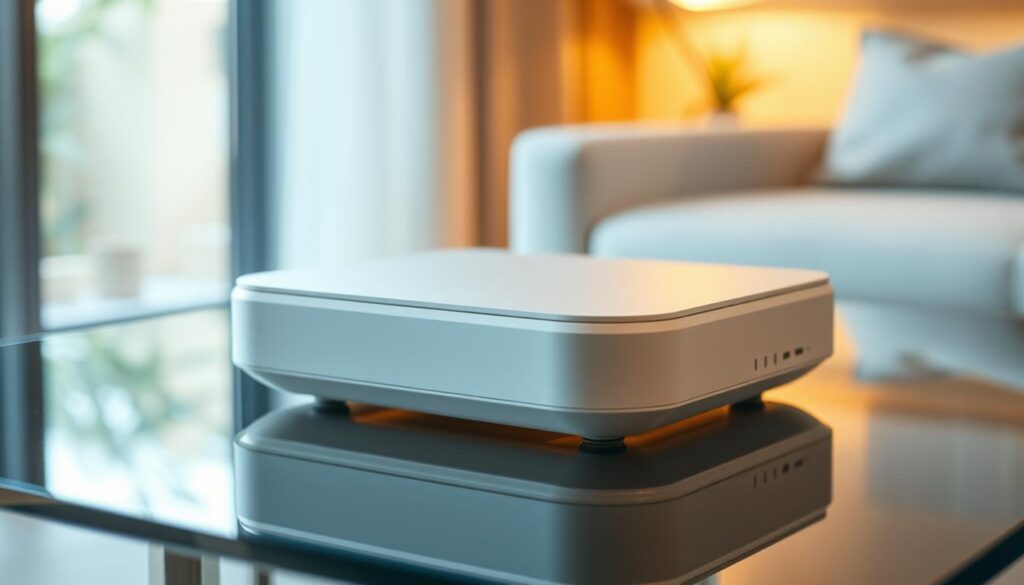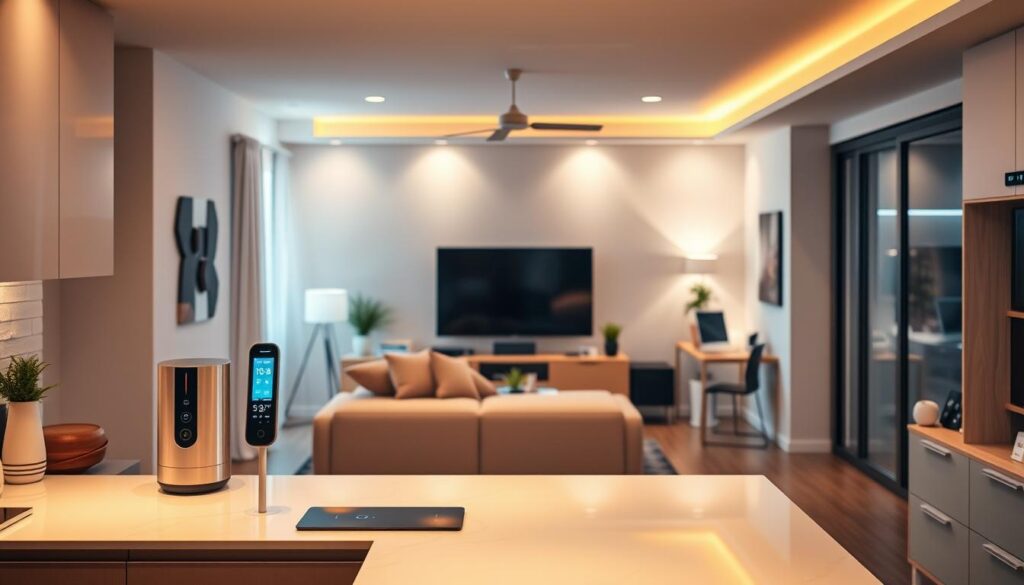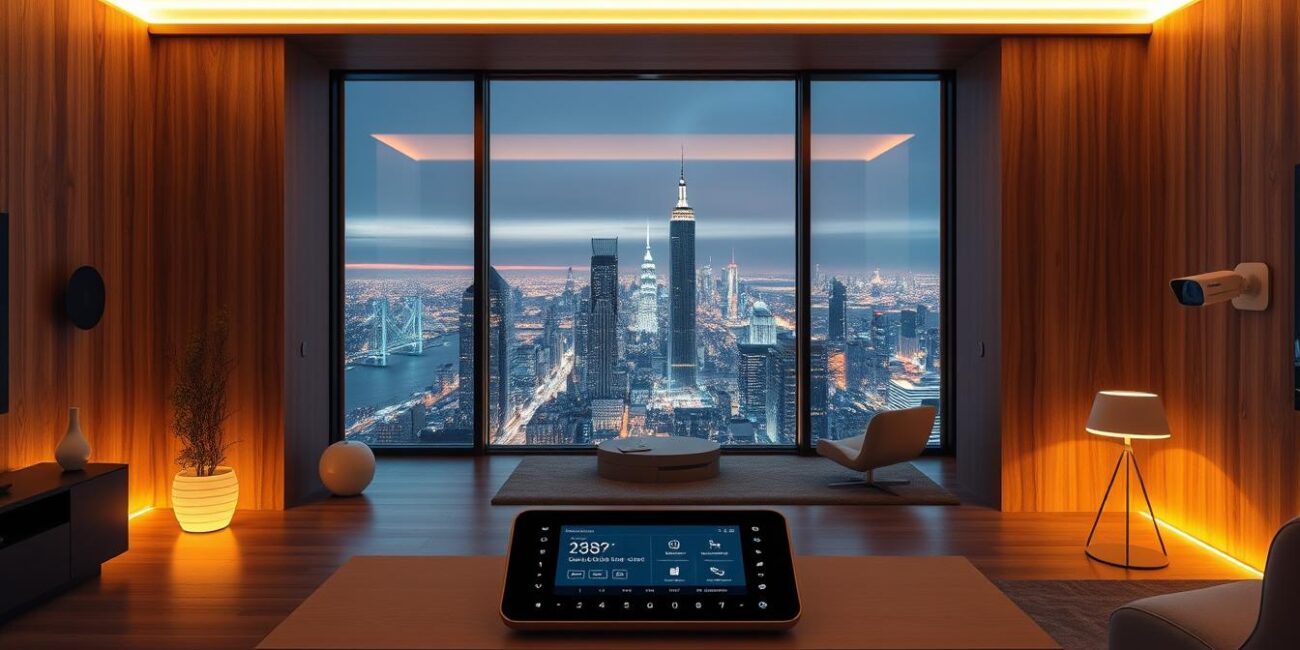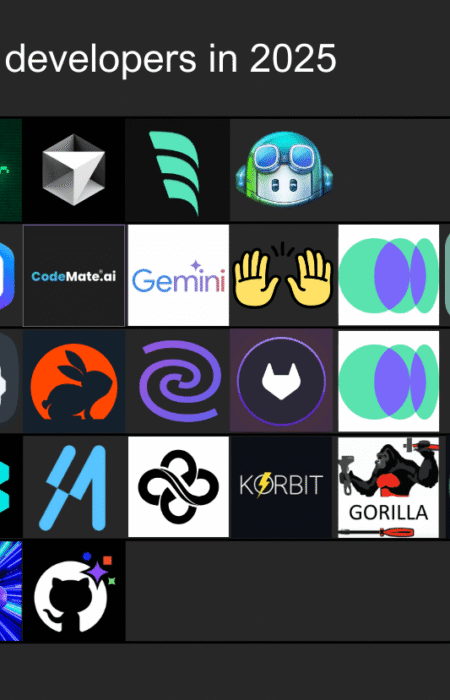What if your home could predict your needs before you even realize them? By 2025, interconnected devices will transform living spaces into intuitive ecosystems. From voice-controlled lighting to AI-powered security, these innovations are redefining modern comfort.
Experts predict seamless integration with urban infrastructure, turning houses into nodes of smart city networks. Basic setups start at $897, while full automation can reach $15,000—but entry-level options like the $49 Google Nest Mini make the technology accessible.
Energy efficiency demands and advanced security systems are driving adoption. This article explores key components, emerging trends, and practical implementation strategies for forward-thinking homeowners.
What Is a Smart Home?
A connected residence uses IoT to simplify daily routines effortlessly. These setups link devices like thermostats and lights through a central hub, enabling remote control via apps or voice commands. The result? A living space that adapts to your habits.

Definition and Core Features
At its core, a smart home relies on internet-connected systems. Key components include:
- Smart locks for keyless entry
- Voice assistants like Alexa or Google Assistant
- Security cameras with real-time alerts
These elements work together through protocols like Zigbee or Z-Wave, ensuring seamless connection.
How Smart Home Technology Works
A central hub, such as Samsung SmartThings, acts as the brain. It communicates with devices using wireless signals. For example, adjusting your thermostat from bed requires just a Wi-Fi network and compatible appliances.
Wireless vs. Hardwired Systems
Choosing between wireless and hardwired setups depends on budget and needs:
| Feature | Wireless | Hardwired |
|---|---|---|
| Cost | $1,000–$5,000 | $10,000+ |
| Installation | DIY-friendly | Professional required |
| Security | Standard encryption | Tamper-proof wiring |
Wireless options suit renters, while hardwired systems boost resale value. New standards like Matter (launched in 2022) improve compatibility across brands.
Note: 72% of users worry about data privacy. Always update firmware and use strong passwords.
Key Components of a Smart Home System
From lights that adjust themselves to cameras that recognize faces, today’s tech is transformative. These systems blend convenience, energy savings, and security into one seamless experience. Here’s how the core elements work together.

Smart Lighting and Climate Control
Philips Hue’s sunrise simulation wakes you gently, while motion sensors cut energy use by 30%. The Wyze Thermostat learns your schedule, saving 23% on HVAC costs.
Ecobee takes it further with occupancy-based algorithms. Empty rooms stay idle, reducing waste without manual control.
Security and Surveillance Devices
55% of buyers prioritize security. The Ring Doorbell Pro 2 ($119 refurbished) deters porch pirates, while Nest Aware’s facial recognition alerts you to familiar faces.
Compare Arlo’s wireless flexibility to Ring’s emergency integrations. Alexa Guard adds glass-break detection, syncing with First Alert detectors for instant response.
Entertainment and Voice Assistants
Sonos fills every room with synchronized audio via voice commands. Pair it with a hub like SmartThings to manage smart home devices effortlessly.
Multi-room setups adapt to preferences—dim the lights, lower the blinds, and cue your playlist with one phrase.
Top Smart Home Trends for 2025
By 2025, your living space will anticipate needs with uncanny precision. Advances in smart home technology are shifting from reactive to predictive, blending AI, sustainability, and urban connectivity. These innovations promise homes that don’t just respond—they learn.

AI-Powered Automation
Machine learning is revolutionizing everyday devices. LG’s Contextual AI refrigerator tracks food expiration, while GE’s UltraFresh washer detects stains autonomously. University of Illinois research shows AI-driven irrigation slashes water use by 40%.
Voice assistants are getting smarter too. Alexa’s upcoming ChatGPT integration will enable nuanced conversations, turning simple commands into dynamic interactions.
Energy-Efficient Innovations
Sustainability drives the next wave of upgrades. Kohler’s shower valves reduce water waste by 30%, and Tesla Powerwall balances grid loads during peak demand. ResearchGate notes smart grids could cut peak energy use by 20%.
Enphase Energy’s bidirectional EV chargers exemplify the shift. Soon, systems will pull power from car batteries during outages, blurring the line between vehicle and home.
Integration with Smart Cities
Homes are becoming nodes in larger systems. Municipal IoT partnerships optimize waste collection, while V2H (vehicle-to-home) networks expand. These automation layers sync traffic lights, utilities, and security into one ecosystem.
Imagine your EV routing power to the grid during shortages—efficiency redefined.
Benefits of Adopting Smart Home Technology
The real value of connected living? Saving money while boosting security. Modern home automation isn’t just about flashy gadgets—it’s practical, cutting costs and simplifying routines.

Convenience and Remote Access
Forgot to lock the door? With devices like August Smart Lock, share temporary digital keys or check statuses remotely. Voice assistants like Alexa add hands-free control, perfect for multitasking.
Lutron’s lighting systems simulate occupancy during vacations, deterring burglars. Sync blinds, music, and temps into one schedule—no more manual adjustments.
Cost Savings and Energy Efficiency
Ecobee’s AI thermostats save 23% on HVAC bills annually. Pair them with Energy Star-certified appliances for max savings. Studies show home automation can reduce overall energy use by 30%.
- Smart plugs cut phantom power drain
- Kohler’s water-saving showers use 30% less
- Tesla Powerwall stores solar for peak hours
Enhanced Security Features
Vivint’s crime deterrent systems claim 300% ROI by preventing break-ins. Yale’s tamper-proof sensors and ADT’s 24/7 monitoring add layers of security.
Compare options like SimpliSafe ($15/month) for budget-friendly alerts. Real-time camera feeds and AI analytics (e.g., Nest) recognize familiar faces, reducing false alarms.
How to Build a Smart Home System
Building a connected living space starts with the right foundation. Whether you’re tech-savvy or a beginner, a well-planned setup ensures seamless automation. Follow these steps to create a system that grows with your needs.

Choosing the Right Hub
The hub acts as the brain of your smart home system. Samsung’s SmartThings supports 200+ devices, while Matter protocol ensures compatibility across 650+ product categories. For tech enthusiasts, Hubitat offers local processing, unlike cloud-dependent options.
Eero’s TrueMesh handles 90+ simultaneous connections, ideal for larger setups. Prioritize hubs with Z-Wave’s 4-layer encryption for security. Always check for firmware updates to protect against vulnerabilities.
Starting with Basic Devices
Begin with affordable, high-impact devices. The Amazon Echo (4th Gen) paired with a Wyze bulb creates a voice-controlled lighting system. These entry points require minimal setup but deliver instant convenience.
Consider appliances like smart plugs to cut phantom energy drain. For security, add a video doorbell—a single device enhances safety and integrates with other home systems.
Scaling Up Your Setup
Expand gradually to avoid Wi-Fi bottlenecks. CES 2024 winners like Aqara FP2 motion sensors add advanced automation. For whole-home backup, Generac PWRcell ensures uninterrupted power.
New constructions benefit from structured cabling. Hardwired systems like Control4 offer reliability but require professional installation. Balance wireless flexibility with future-proofing for long-term value.
Security Challenges and Solutions
61% of IoT breaches start with unsecured cameras—are yours safe? As devices multiply, so do entry points for hackers. Palo Alto Networks research shows cheap IoT cameras with default passwords are prime targets. The fix? Layer defenses to protect your system.

Common Vulnerabilities
Weak connections invite trouble. WPA2 networks crack in minutes, while outdated firmware leaves hubs exposed. Forbes confirms VPNs block 94% of attacks—yet only 12% of users enable them.
Physical risks matter too. Dead batteries in smart locks or unsecured hubs create gaps. The 2022 Insteon shutdown left users stranded, proving vendor reliability is critical.
Best Practices for Secure Smart Homes
Start with basics:
- Change default credentials on all devices
- Enable WPA3 encryption (3x stronger than WPA2)
- Install Bitdefender’s real-time monitoring
ASUS AiProtection scans for intrusions, while NextDNS filters malicious sites. For remote access, NordVPN’s Meshnet encrypts data across locations.
Future-Proofing Your System
The Matter protocol mandates encryption, ensuring safer cross-brand connections. Schedule monthly firmware checks, and prioritize energy-efficient devices with long-term support.
Generac’s battery backups keep security systems online during outages. Remember: A chain is only as strong as its weakest smart plug.
Smart Home Accessibility and Inclusivity
Technology should empower everyone—regardless of ability. Modern smart home devices now feature adaptive designs that cater to diverse needs. From touch-free entry to health monitoring, these innovations create equal access to automated living.
Devices for Mobility and Disability Support
Level Lock’s ADA-compliant deadbolt opens with a light touch—ideal for arthritis sufferers. Enabling Devices’ sip-and-puff switches convert breath into control signals, while Savant’s lowered touchscreens accommodate wheelchair users.
Health-focused things like CarePredict track daily activity patterns. Many qualify for HSA/FSA reimbursement, including Withings’ blood pressure monitors. Privacy remains key; always review data collection policies for medical alerts.
Voice Control and Adaptive Interfaces
Google’s Project Relate helps those with speech impairments communicate with voice assistants. Josh.ai understands dysarthria, and Apple HomePod detects smoke alarms—critical for hearing-impaired users.
Lutron’s Pico remotes need just 1.5lbs of pressure. Reemo’s wristband enables gesture-based lighting adjustments. These solutions prove automation isn’t one-size-fits-all—it’s about creating access through thoughtful design.
Conclusion
By 2025, nearly 43 million U.S. households will embrace smarter living, per Statista. Start small—smart plugs or voice assistants under $500 offer entry points. Avoid over-automation; focus on practical upgrades like fall-detecting sensors or medication dispensers.
Insurance perks sweeten the deal. State Farm’s 22% home discount rewards security investments. For larger setups, professional audits ensure seamless integration, especially with the Matter standard unifying brands.
The future is eco-conscious too. Widespread adoption could slash national energy use by 15%. Balance innovation with interoperability, and your space will evolve effortlessly.












